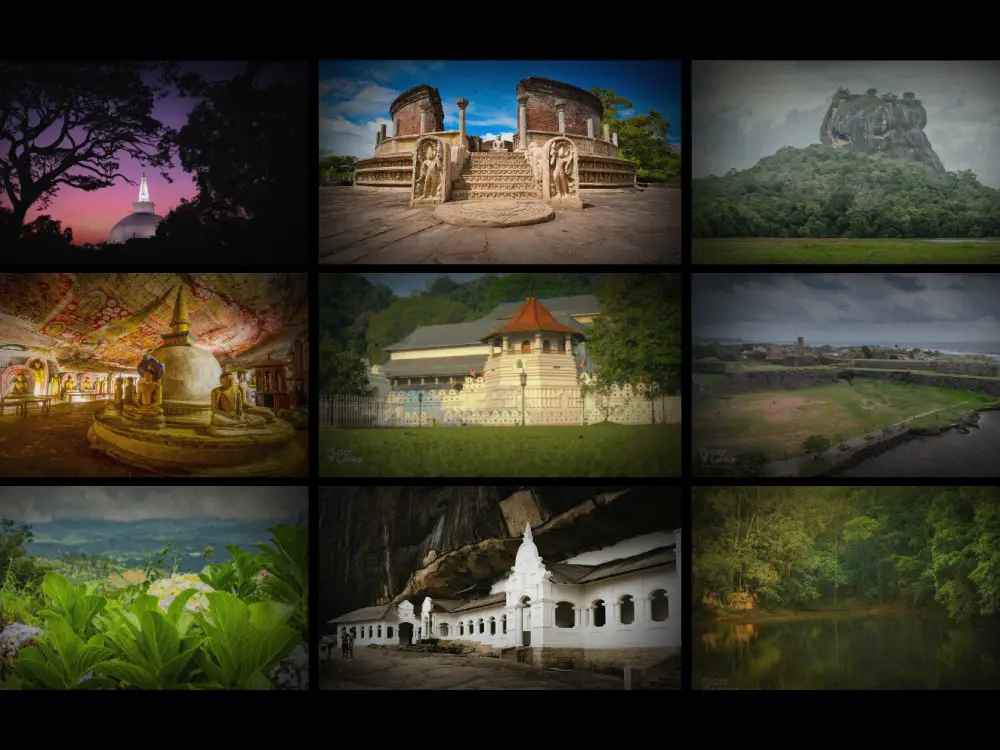
Sri Lanka, the pearl in the Indian Ocean, is a treasure trove of history, culture, and architecture, encompassing several UNESCO World Heritage Sites within its precincts. These reflect the island's rich legacy from the times of ancient kingdoms down to colonial times and need to be visited if one is searching for the soul of this really beautiful country. Let us embark upon a journey to explore these wonders, highlighting their historical value, architectural grandeur, and reasons for UNESCO recognition.
Period: Established in the 4th century BCE
UNESCO Recognition: For its role as the first capital of Sri Lanka and a major centre of Buddhism.
Why Visit:
Anuradhapura offers a glimpse into the dawn of Sri Lankan civilization, where spirituality and engineering flourished side by side.
Period: 11th–13th century CE
UNESCO Recognition: For its well-preserved ruins of a great medieval kingdom.
Why Visit:
Polonnaruwa reflects the zenith of Sri Lankan urban planning and religious art, blending Buddhist and Hindu influences.
Period: 5th century CE
UNESCO Recognition: For its architectural brilliance and advanced urban design.
Why Visit:
Often dubbed the “Eighth Wonder of the World,” Sigiriya epitomises the ingenuity of ancient Sri Lankan kings.
Period: 1st century BCE onwards
UNESCO Recognition: It's a representative of Buddhist art and cultural continuity
Why Visit:
Dambulla is a testament to Sri Lanka’s enduring Buddhist heritage and artistic expression.
Period: 15th–19th century CE
UNESCO Recognition: For its spiritual significance and the Temple of the Tooth Relic (Sri Dalada Maligawa).
Why Visit:
Kandy serves as a living cultural hub where tradition and devotion thrive in harmony.
Period: 16th–18th century CE
UNESCO Recognition: For being one of the best examples of a fortified city built by Europeans in South Asia.
Why Visit:
Galle Fort is a step back in time, offering a contrast to Sri Lanka’s ancient heritage with its colonial charm.
Period: Recognized for its natural value
UNESCO Recognition: For its biodiversity and endemic species.
Why Visit:
The Central Highlands are a haven for eco-tourists, showcasing Sri Lanka’s commitment to preserving its natural heritage.
Period: Recognized in 1988
UNESCO Recognition: As a world-renowned rainforest with exceptional biodiversity.
Why Visit:
Sinharaja offers an immersive experience in Sri Lanka’s unique ecosystem, vital for global biodiversity.
Period: From the 1st century BCE to the 19th century CE
UNESCO Recognition: As a symbol of Buddhist art and cultural continuity.
Why Visit:
It’s an awe-inspiring blend of natural beauty and spiritual significance.
Sri Lanka UNESCO sites stand tall with other global icons, including the Great Wall of China and Machu Picchu. Sigiriya's engineering wonder stands shoulder to shoulder with ancient Roman structures, while Sinharaja's biodiversity reflects the Amazon.
Visit them responsibly. Support local communities, do not litter, and respect cultural norms so that these treasures remain for generations to come.
Glimpse of Lanka encompasses the ancient history, architectural brilliance, and cultural richness of Sri Lanka.
🌟 Visit our website for a cultural heritage tour tailored especially for you.
🌟 Follow us on social media for travel inspiration.
🌟 Book your tour now to begin your timeless journey.
UNESCO heritage sites present a deep connection between times past, and the historical, architectural, and spiritual appeal of Sri Lanka in all its hues to attract interested visitors. Plan your visit today and step right into history!